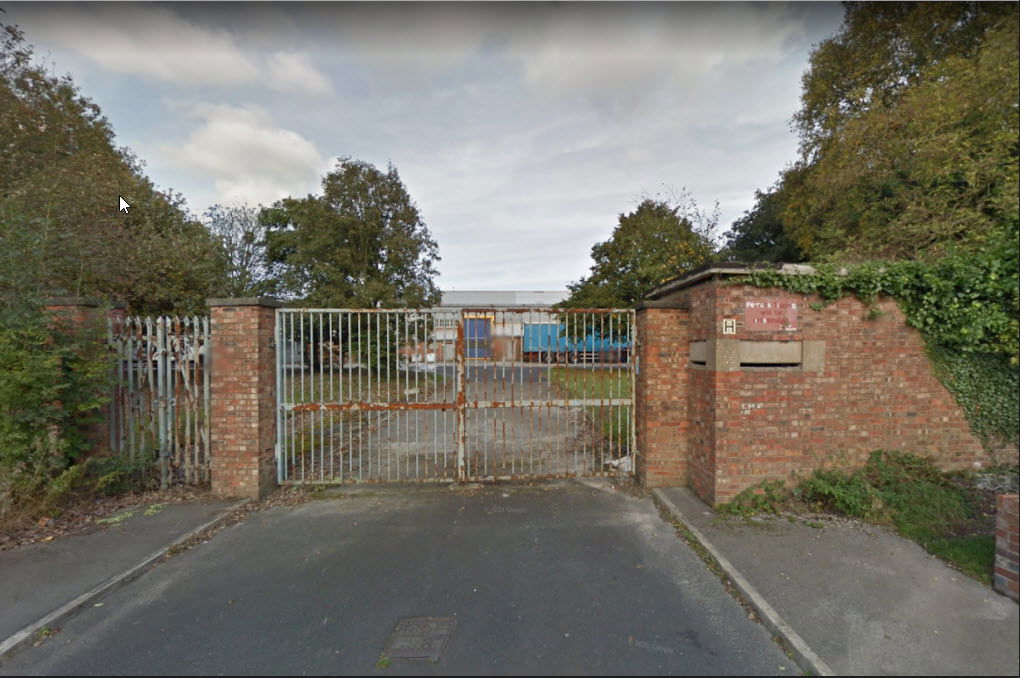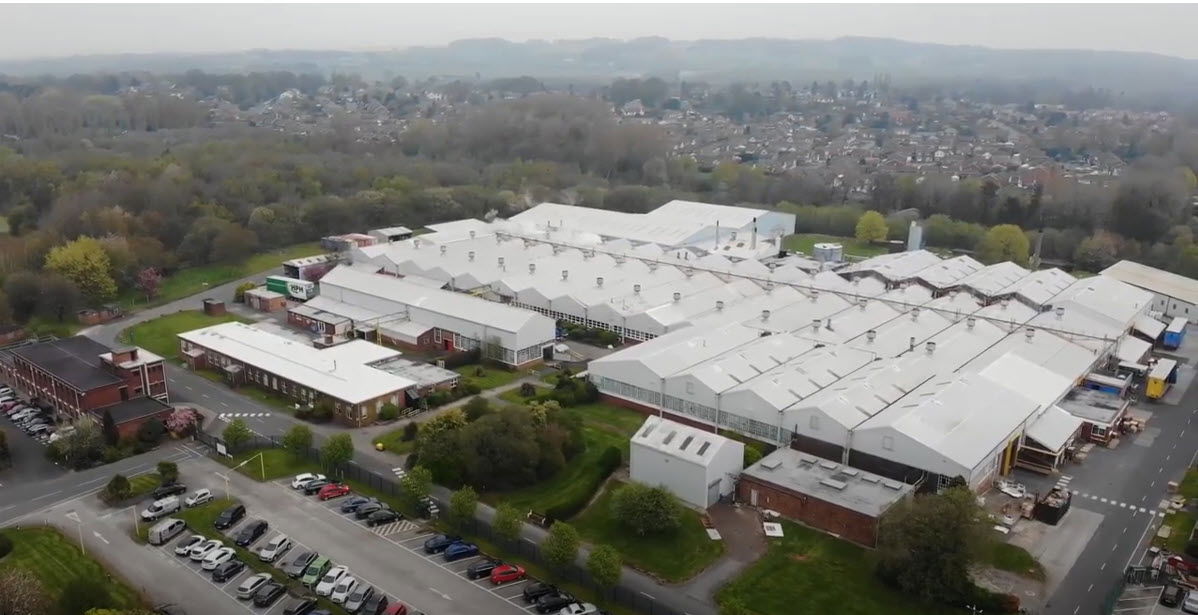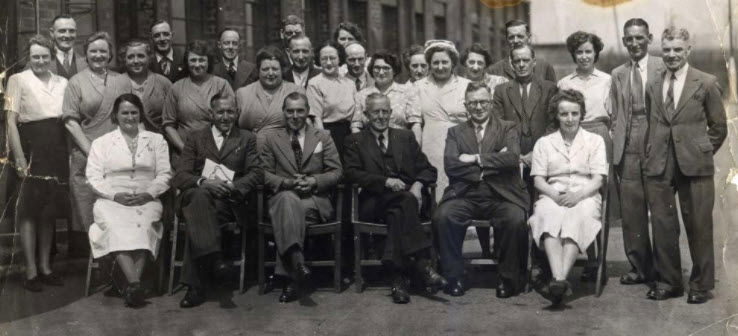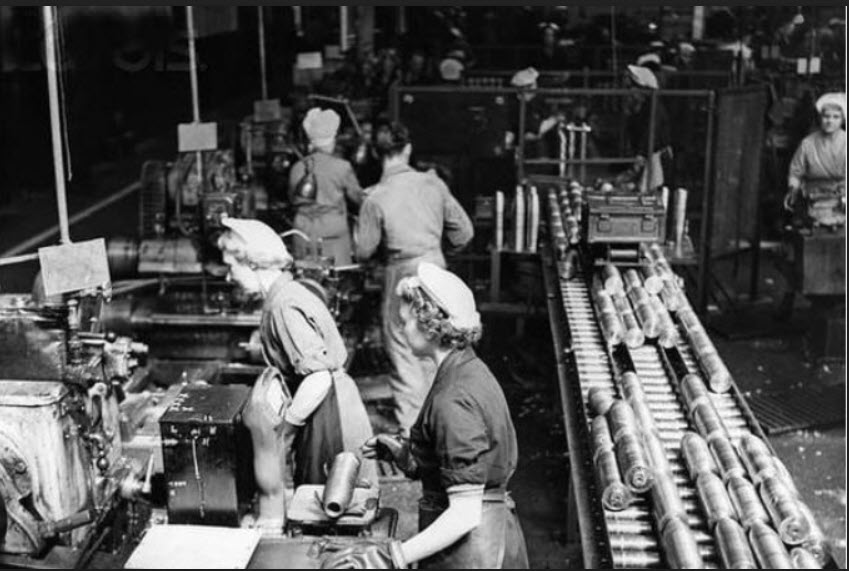Royal Ordnance Factory - Beech Hill

ROYAL ORDNANCE FACTORY, BEECH HILL, WIGAN
Introduction
The residents of Beech Hill are familiar with the Milliken factory in Gidlow Lane that manufactures carpets and rugs. The firm’s head office is in Spartanburg, South Carolina and has over 40 manufacturing facilities in the United States, Belgium, France, Mexico, and China.
 Milliken Factory
Milliken Factory
The firm came to Wigan after its previous owner Tupperware, another American company ceased it’s UK operations in 2003. Tupperware of course made polystyrene cutlery and containers that revolutionised British kitchens in the 1960’s
Keith Bowen, the son of the landlord of the Wellfield Hotel remembers the Tupperware management coming to the pub in Wellfield Road after work in the early 60’s for a drink, especially if visiting management from the USA were present. Sometimes these sessions would last long into the night, the drink of choice being whiskey.
I suspect though that most of the present workforce do not know the purpose of the factory being built in the first place and its history.
Royal Ordnance Factories
In the 1930’s as the threat of war against Germany loomed large the Government recognised that it was behind in the production of weapons and ammunition compared to Germany. So to catch up and increase production a program of building new Royal Ordnance Factories (ROF’s) supplying munitions was started.
Under the responsibility of the Ministry of Supply, six diverse types of ROF’s came into use. Engineering, Medium Machine Shops, Explosives, Small Arms Ammunition, Rifles and Filling Factories. By the end of the war there were forty eight ROF’s, other armament factories were not listed as official ROF’s as they were run by private companies such as ICI.
The three original ROF sites, the Royal Arsenal at Woolwich, the Royal Small Arms factory at Enfield, and the Royal Gunpowder factory at Waltham Abbey, all located in the London area, were considered to be vulnerable to aerial bombing from western Europe, so the new ROFs were to be built in areas regarded as relatively safe.
Until early in WW2 this meant no further south than Bristol and they had to be west of a line that ran from Weston-Super-Mare in Somerset, northwards to Haltwhistle in Northumberland, and then north westwards to Linlithgow in Scotland.
Siting of the individual ROFs north and west of this line was of vital importance as they had to be out of reach of air raids by the Luftwaffe. Although after the fall of France and Norway in June 1940 most did become within range of enemy bombers.
ROFs involved with the manufacture of explosives or the filling of shells with explosives needed, on safety grounds, to be located away from centres of population. However, they needed access to good transport links, such as railways, and the availability of adequate numbers of workers within reasonable travelling distance.
Beech Hill, ROF No.15
Beech Hill filled all the criteria and was designated as ROF No.15, tasked with the production of artillery shells. It had a ready-made workforce on its doorstep in the Beech Hill housing estate and surrounding districts, but for this reason no explosives were handled on the sixteen acre site.
Due to the importance of the ROF’s to the country’s national security the workers were bound by the official secrets act. Mention of them was suppressed in the press and map makers blanked their locations out.
As with all other industries during the war the workforce mainly consisted of women workers, as all the young men of fighting age were conscripted into the Armed Forces. The female workers proved very skilful and more than adequate at doing jobs previously thought only capable of by men. Across all industries though, this caused some animosity and upset after the war, when the servicemen came home and wanted their old jobs back.
There were pillboxes covering the whole perimeter of the facility, The main gate was in Gidlow Lane and access was controlled by a guard room. In Dawson Avenue on the southern edge there was a back gate covered by a pill box. On the eastern side, accessed from the footpath known as Beggars Walk at the side of the railway line, there was a row of air raid shelters behind the perimeter fence.
On the northern perimeter a branch left the mineral line from Giants Hall Pit and John Pit through double gates into the factory. The finished shells were loaded onto freight wagons that had direct access to the main railway line at Whitley sidings, from where they were transported to filling factories.
Post War
When the war ended in 1945 most of the ROF’s were closed, some of the factories were sold to private companies for use in industry, others which had been built just for the duration of the war were dismantled and the brownfield sites sold for redevelopment.
Beech Hill and Chorley were kept open as peacetime armaments suppliers although production was stepped up briefly to near war time levels again during the Korean War that lasted from 1950 to 1953.
Beech Hill closed in 1959 and later sold to Tupperware, then Milliken. It’s possible to walk round the perimeter today where you can still see reminders of it’s heyday in the war years. A pillbox is visible behind No 24 Dawson Avenue and if you continue to the bottom of the road and round to the left there is a pillbox with weapon slits covering the back gate. Pillboxes can still be seen on the northern side on the route of the now defunct coal mineral line.
 Pill box at the rear entrance to the factory
Pill box at the rear entrance to the factory
Nearby Munitions Factories
There were three other munitions factories in the area. One was located at Bradley Lane in Standish. It didn’t have an official ROF number as it was operated by a private company, Imperial Chemical Industries (ICI). Small arms ammunition was manufactured on the site, namely the .303 calibre bullet that was used in the Lee Enfield rifle, Bren Gun and also in belt fed ammunition for the Spitfire and Hurricane fighter aircraft. As well as ball cartridges, tracer and armour piercing rounds were manufactured. Ammunition made in Standish had the letters ‘K2’ stamped on their heads.
The Beech Hill site was tiny in comparison to ROF Chorley at Euxton which was the biggest filling factory in the country, if not the world, it was designated Filling Factory No.1. As the name implies this was where the shells manufactured at factories such as Beech Hill were filled with explosives. This was a very dangerous job, apart from the risk of explosions some munition workers handled toxic chemicals every day. Those who handled sulphur were nicknamed ’canary girls’ because their skin and hair turned yellow from contact with the chemical.
The site covered 923 acres and the perimeter fence was nine miles long, it had its own telephone exchange, railway station and road system, all with street names. At its peak it employed 28,000 workers. The bouncing bombs designed by Barnes Wallis and used in the Dam Busters raid of 1943 in northern Germany were filled at Chorley.
Another ROF built adjacent to the main London to Glasgow line was ROF Risley near Warrington. It was another filling factory like Chorley and designated Filling Factory No.6. All four of these sites would have employed workers from Wigan and District.
In WW2 countless numbers of British and Commonwealth soldiers all over the world would have loaded their artillery pieces with shells made in Beech Hill and fired their weapons with bullets manufactured in Standish.
Post War
When the war ended in 1945 most of the ROF’s were closed, some of the factories were sold to private companies for use in industry, others which had been built just for the duration of the war were dismantled and the brownfield sites sold for redevelopment.
Beech Hill and Chorley were kept open as peacetime armaments suppliers although production was stepped up briefly to near war time levels again during the Korean War that lasted from 1950 to 1953.
 Beech Hill staffBeech Hill closed in 1959 and later sold to Tupperware, then Milliken. It’s possible to walk round the perimeter today where you can still see reminders of it’s heyday in the war years. A pillbox is visible behind No 24 Dawson Avenue and if you continue to the bottom of the road and round to the left there is a pillbox with weapon slits covering the back gate. Pillboxes can still be seen on the northern side on the route of the now defunct coal mineral line.
Beech Hill staffBeech Hill closed in 1959 and later sold to Tupperware, then Milliken. It’s possible to walk round the perimeter today where you can still see reminders of it’s heyday in the war years. A pillbox is visible behind No 24 Dawson Avenue and if you continue to the bottom of the road and round to the left there is a pillbox with weapon slits covering the back gate. Pillboxes can still be seen on the northern side on the route of the now defunct coal mineral line.
H.J. Heinz acquired the Standish munitions factory in 1948 and produced baby foods up until relocating to its new site at Kitt Green in 1959. It is now an industrial site but remnants of the old munitions facility still exist.
ROF Chorley closed in 2005 and the site sold for redevelopment, today the area is known as Buckshaw Village with hundreds of new homes built on the vast site. A new railway station called Buckshaw Parkway was opened in 2011 to service the transport requirements of the 4,000 new inhabitants.
After the second world war ROF Risley became the headquarters of the Atomic Energy Authority and was used during the Cold War up to 1991.
Graham Taylor 2022
Photos: Google Maps, Wigan World
Sources:
Military Wiki,
Wikipedia,
Women at War-the Role of Women during WW2,
